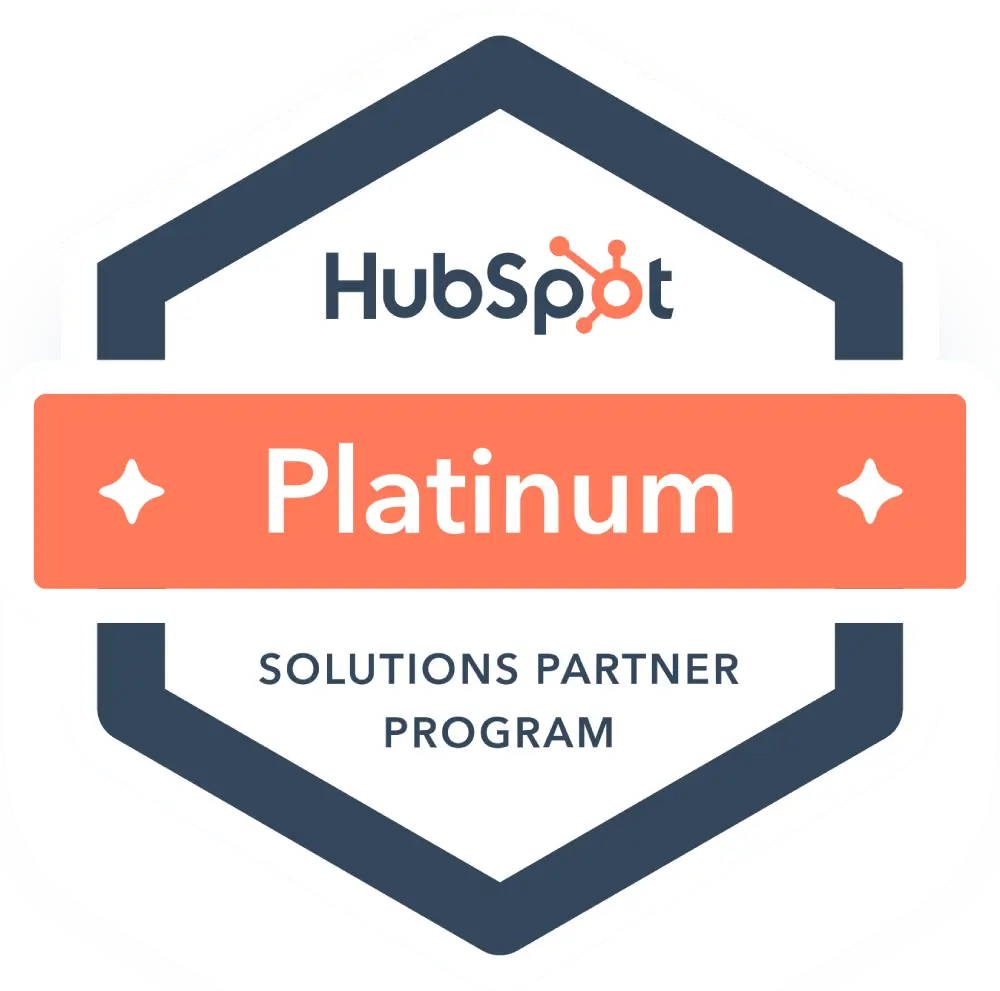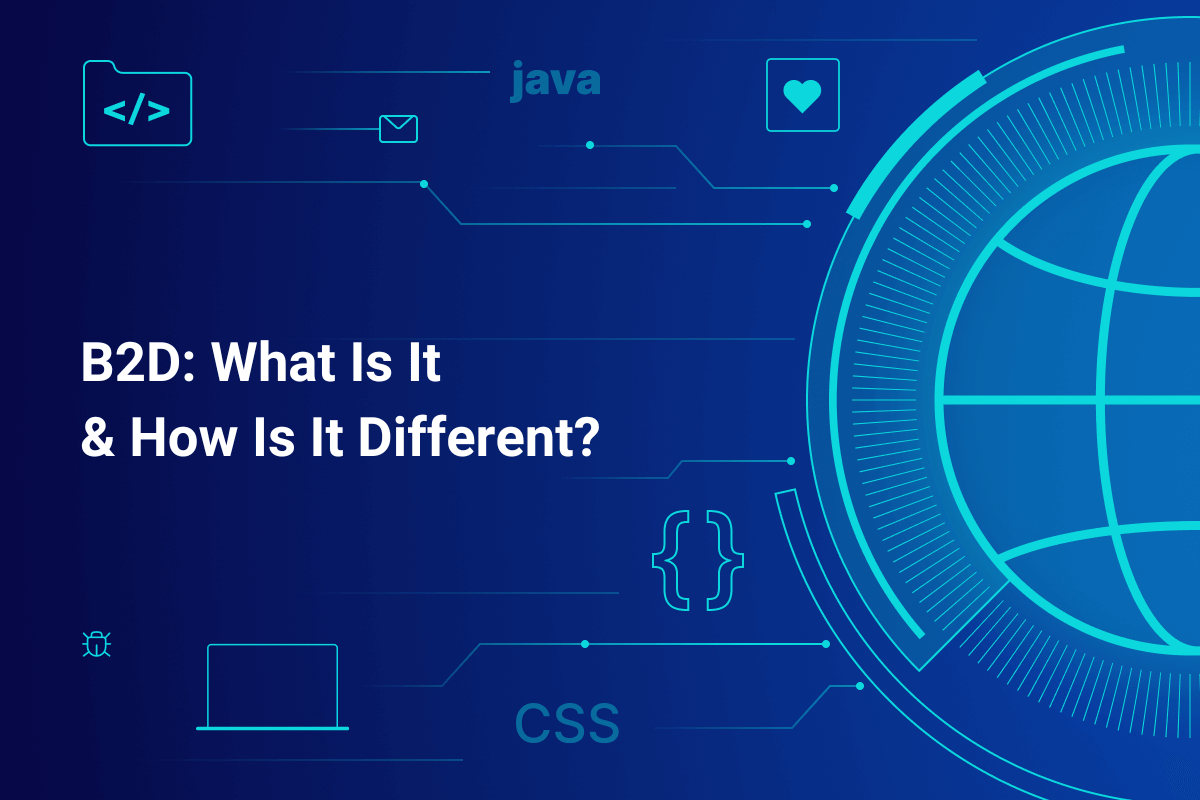When was the last time a marketing strategy failed because it overlooked developers? It happens more often than you think. Developers are no longer passive users—they’re active decision-makers who can make or break a product’s success. From SaaS solutions to DevOps platforms, developers have the technical know-how and influence to steer company-wide adoption of tools and services.
A recent survey revealed that 62% of developers influence technology purchases in their organizations. This surprising statistic underscores the growing importance of engaging developers in your marketing efforts.
However, traditional B2B and B2C marketing strategies often fall short when targeting developers. That’s why Business-to-Developer (B2D) marketing takes a different approach by recognizing developers’ unique expectations for technical depth, transparency, and authentic product experiences. But what exactly is B2D, and how does it cater to this influential audience?
What is B2D?
B2D, or Business-to-Developer, refers to companies that develop and market products tailored specifically for software developers. These offerings include APIs, SDKs, development platforms, cloud services, and other tools essential for building, deploying, and managing software.
Unlike traditional marketing that often targets executives or buying committees, B2D marketing zeroes in on developers who influence or directly make technology decisions within their organizations. The goal of B2D marketing is to connect businesses with developers by addressing their technical needs and providing resources that simplify their workflows and enhance productivity.
These developers include:
- Architects
- Engineers
- Data Scientists
- DevOps Specialists
How does it work? Generally speaking, developers are unique personas that expect transparency, technical accuracy, and autonomy. B2D strategies prioritize delivering value to them through rich technical documentation, working demos, detailed code samples, and collaborative support—elements that resonate with a hands-on, problem-solving audience.
Industries such as cloud computing, cyber security (DevSecOps), and platform-as-a-service (PaaS) have increasingly adopted B2D strategies to improve developer engagement and boost product adoption. Understanding how B2D differs from other business and marketing models can further clarify the need for this specialized approach.
Key Differences Between B2D, B2B, and B2C
While B2D shares similarities with both B2B and B2C, its strategy stands out due to the unique needs of developers. Here’s how these three models differ across core aspects:
| Aspect | B2B | B2C | B2D |
| Audience | Business decision-makers (executives, managers) | General consumers | Developers, engineers |
| Focus | Relationship-building, business outcomes | Emotional appeal, convenience, lifestyle | Technical depth, product functionality |
| Sales Cycle | Long, multi-step process | Short, often impulsive | Often indirect, starts with product trial |
| Decision Process | Collaborative, involving multiple stakeholders | Individual, quick decision-making | Developer-driven exploration and advocacy |
| Key Approach | Personalized demos, consultations | Marketing campaigns, storytelling | Product-led growth, hands-on testing |
| Touchpoints | Meetings, proposals, ROI presentations | Ads, social media, e-commerce | Self-serve trials, documentation, forums |
| Validation | ROI and business impact | Brand trust and convenience | Community trust, product experience |
B2B strategies rely heavily on relationship management and long-term business partnerships, while B2C strategies aim for broad consumer appeal with emotionally-driven marketing. B2D, however, centers on product engagement and hands-on interaction, which is a crucial element of how developers assess tools—and why digital touchpoints are so important.
Why Digital Touchpoints Are Crucial in B2D
Developers engage with brands primarily through online experiences. These digital touchpoints provide transparency and hands-on access to evaluate tools independently, making them essential in B2D strategies. Key digital touchpoints include:
- Sandbox Environments: Enable developers to test product features in a risk-free setting and help them understand how the tool fits into their workflow.
- API Testing Portals: Allow developers to interact with APIs directly to verify performance, reliability, and integration potential.
- Free Trials: Offer hands-on product access that lets developers explore core features and functionality without commitment.
- Technical Documentation: Developers rely heavily on clear, comprehensive documentation to troubleshoot and fully understand a product’s capabilities.
- Developer Blogs: Provide insights, tutorials, and case studies that demonstrate real-world use cases and applications.
- Hackathons and Webinars: Offer opportunities for collaboration, networking, and in-depth exploration of technical topics.
These B2D touchpoints need to work seamlessly to provide a frictionless experience. When developers can independently test and validate tools through these channels, trust and product adoption follow naturally. It’s no surprise that product-led growth strategies thrive in such an environment.
The Role of Product-Led Growth in B2D
The product-led growth (PLG) business strategy is based on leveraging the product itself to promote customer acquisition, engagement, and retention. In the context of B2D, PLG is especially effective because developers prefer to explore and evaluate tools on their own terms. Rather than being influenced by traditional sales pitches, developers want to test and interact with the product directly to determine its usefulness and compatibility with their projects.
PLG empowers developers by giving them immediate access to the product through freemium models, trial versions, and sandbox environments. For instance, offering a free tier with limited but functional features allows developers to experiment without commitment.
Similarly, intuitive onboarding flows guide developers through key product features without requiring outside assistance, helping them quickly understand how the product works and integrates with their existing systems.
Effective PLG strategies also provide developer toolkits, including APIs, SDKs, and sample code, which help developers build and test solutions faster. Companies like Twilio and Stripe have excelled with product-led growth by offering extensive documentation and self-serve APIs that developers can explore at their own pace. This hands-on autonomy is essential to building trust, which is further strengthened by active community engagement.
Building Trust and Community in B2D
It should be no surprise that developers are often skeptical of traditional marketing tactics. Winning their trust requires transparency, technical accuracy, and authenticity. Businesses can achieve this by focusing on strategies that developers value most, such as peer-driven validation and community engagement. Key approaches include:
- Peer Reviews and Case Studies: Developers trust other developers’ experiences more than marketing claims. Sharing success stories and reviews from credible sources boosts product credibility.
- Engaging on Developer Platforms: Participating on platforms like GitHub, Slack, and Reddit builds trust by interacting with developers where they naturally collaborate.
- Knowledge Sharing Initiatives: Hosting technical forums, Ask Me Anything (AMA) sessions, and promoting webinars fosters open dialogue and problem-solving that creates opportunities for deeper engagement.
- Direct Support and Feedback Channels: Offering access to technical support teams and encouraging feedback on product updates strengthens relationships and demonstrates a commitment to developers’ success.
Strong developer communities thrive when members feel supported, heard, and valued. Fostering collaboration and knowledge sharing through these channels helps businesses grow trust and create lasting connections that drive product adoption and advocacy.
5 Tips for an Effective B2D Content Strategy
So, what kind of B2D marketing content do developers want? Developers approach content with a specific mindset: they want technical depth, practical insights, and real-world examples. To build an effective B2D content strategy, follow these five actionable tips:
1. Create Detailed, Problem-Solving Tutorials
Developers value content that walks them through real use cases and solutions. Provide step-by-step instructions and practical examples.
2. Provide Easy-to-Use Code Samples
Include ready-to-implement snippets to save developers time. Clear, working examples are crucial for quick adoption.
3. Share Authentic Developer Testimonials
Showcase real stories from developers who have successfully used your product. Peer validation carries significant weight.
4. Contribute to Open-Source Projects
Building goodwill within developer communities can enhance your visibility and credibility. Open-source contributions demonstrate your commitment to the ecosystem.
5. Optimize Content for SEO
Developers often rely on search engines to find answers and tools. Use product-specific and problem-driven keywords to make your tutorials, blogs, and documentation SEO optimized and more discoverable.
When your content is clear, discoverable, and genuinely helpful, it builds long-term engagement and positions your product as a trusted resource for developers. Bringing all these elements together—engagement, trust, and content—is essential for sustained success in B2D.
Meet Developers Where They Are with B2D & mvpGrow
A successful B2D strategy requires more than just a solid product—it demands a thoughtful approach tailored to developers’ unique expectations. Developers want transparency, technical resources, and hands-on experiences that build trust and drive adoption. Meeting developers where they are with effective B2D marketing helps your solution gain the visibility and validation it needs to stand out in today’s competitive tech landscape.
This is where mvpGrow can help. With deep expertise in product-led growth and developer engagement, mvpGrow can create a custom B2D strategy designed to support your business goals. From building seamless self-serve funnels to developing comprehensive technical documentation and nurturing developer communities, mvpGrow equips your company with data-driven insights and a developer-first approach to help you scale effectively. Schedule a free call with mvpGrow today to learn how we can strengthen your B2D strategy and help you achieve sustainable growth.

The Founder & Chief Getting Sh%T Done Officer of mvpGrow. After about 8 years as a hired hand some of the largest (and smallest) B2B SaaS companies worldwide I decided to hang up my employee slippers and lace up my growth agency cleats. But just because I’m an agency doesn’t mean we can’t chat (no charge). Please email me on any topic and I will gladly reply: eyal@mvpgrow.com

